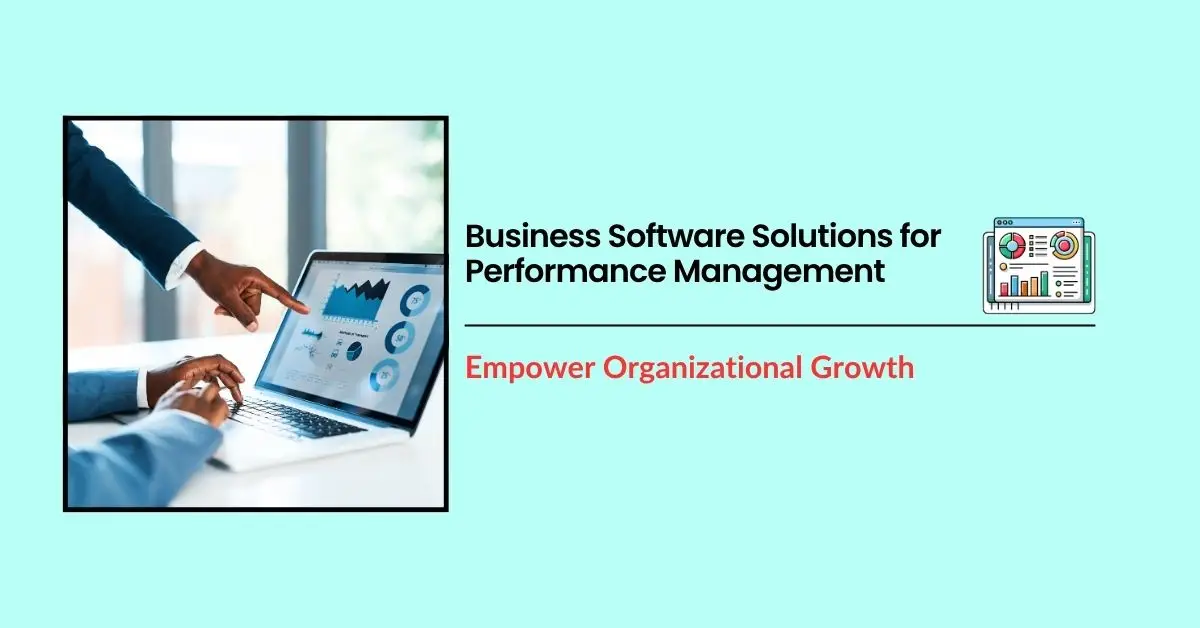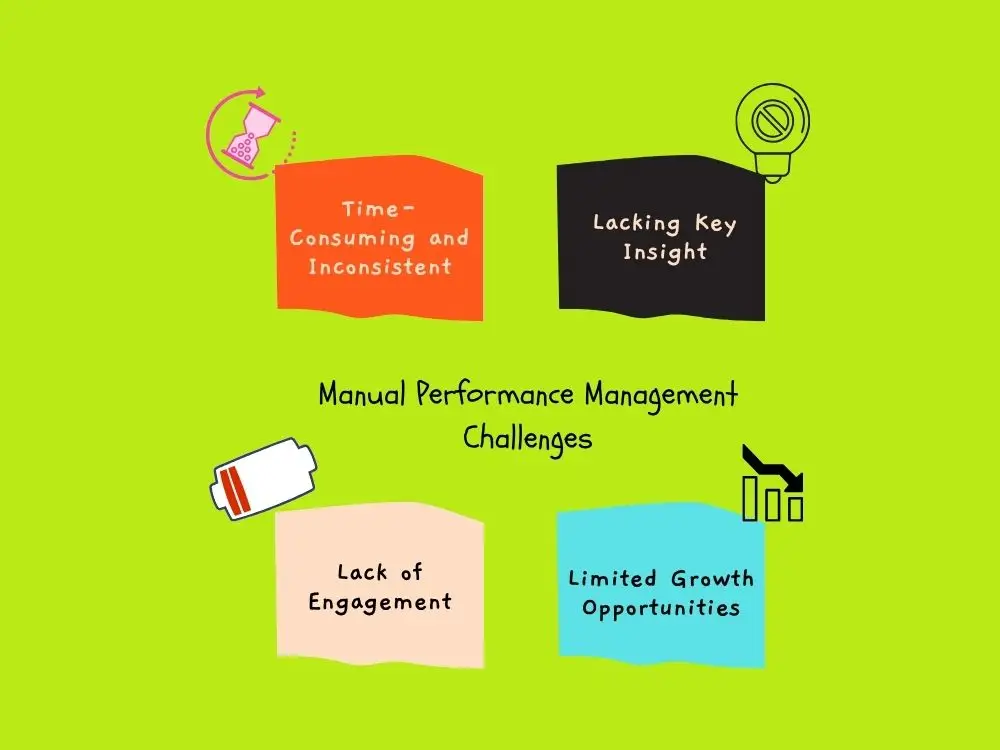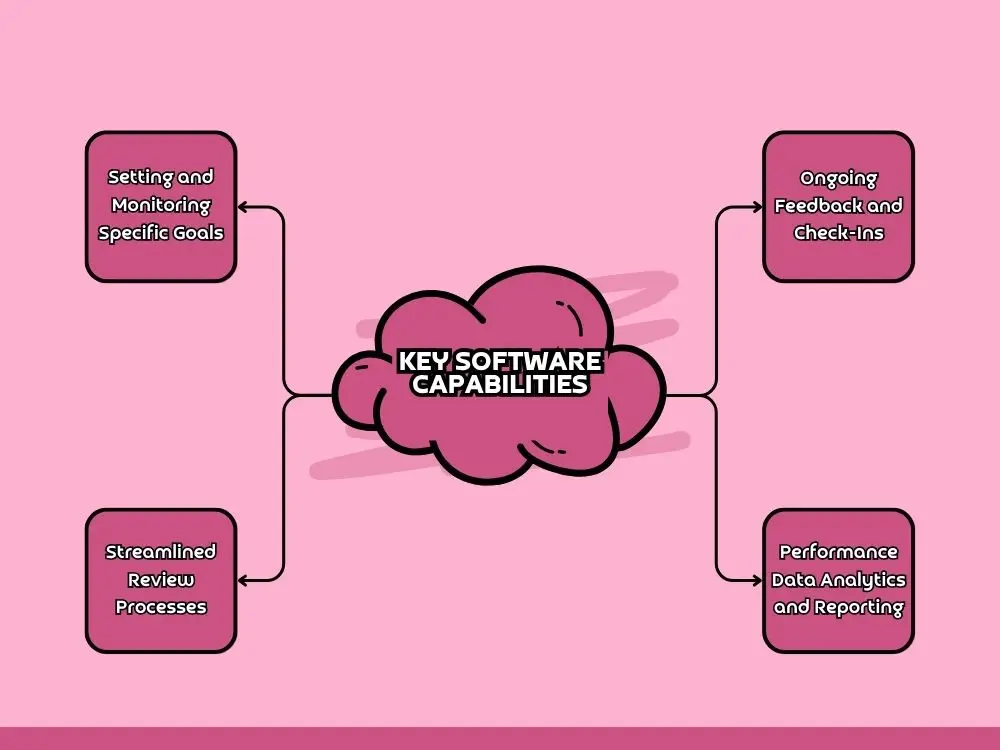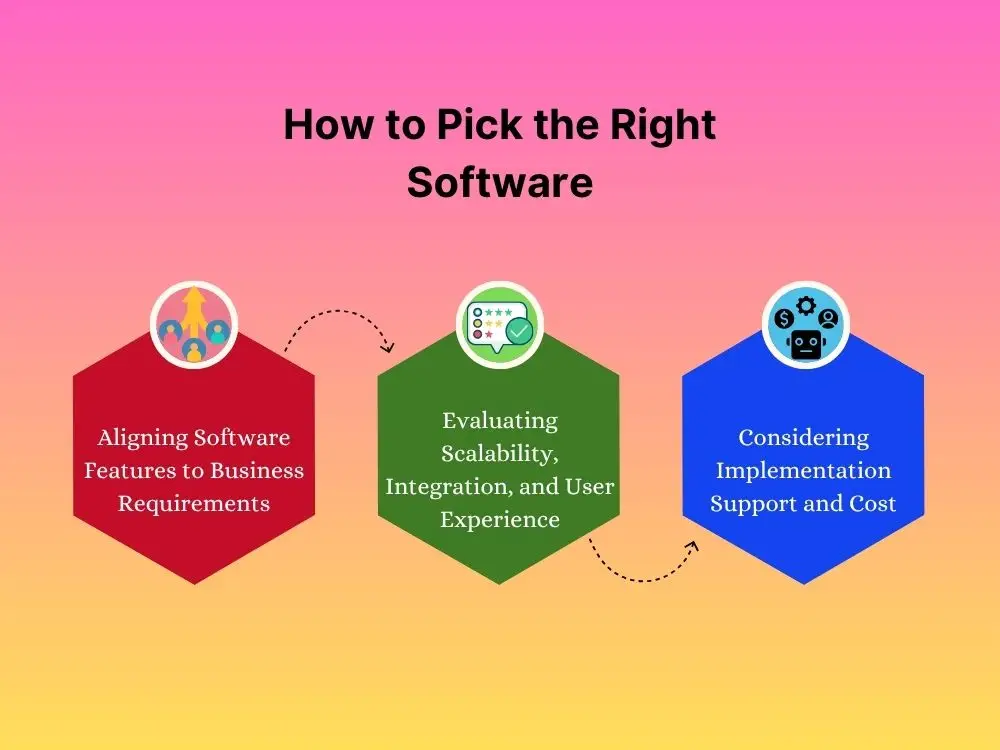
Empowering Organizational Growth with Business Software Solutions for Performance Management
Performance is important for any business that wants to grow in a way that lasts. It's the foundation of lasting success. But to be honest, those old, manual ways of managing teams can feel like they're holding us back, which makes it hard to get clear insights and adapt quickly when needed.
There's a better approach, though. Modern business software solutions have changed performance management from a dreaded annual event into a dynamic tool that genuinely helps everyone grow and succeed. These systems make tracking progress smoother, conversations more meaningful, and results more visible for teams at every level.
Key Takeaways
- Understand why traditional manual performance reviews are holding your team back from real growth.
- Discover the leading business software categories and tools available for performance management.
- Learn essential software features that actually matter for turning performance management into a growth driver.
- Discover how the right software boosts engagement and helps you make smarter business decisions.
- Get straightforward tips for picking software that fits your team size and budget.
Challenges of Traditional Manual Performance Management
The traditional approach to managing performance tends to add more challenges than it solves. While using spreadsheets and having a handful of occasional check-ins may appear straightforward enough, they indeed hinder teams from reaching their fullest potential.

- Time-Consuming and Inconsistent: Performance management involves tasks like searching for the forms, setting up meetings, gathering feedback, and many others. These may consume more time when done manually. Unless all managers stick to the same processes, each manager may act in their own way, making it unfair and confusing for managers and employees across teams.
- Lacking Key Insight: Decision making is impossible if you want to identify your top talent or identify issues early because the performance data is kept in disparate files or in managers' heads.
- Lack of Engagement: If employees are seen as a dreaded once-a-year need, they disengage mentally. Infrequent, unclear feedback leaves people feeling disconnected and questioning whether the whole process is worth their time.
- Limited Growth Opportunities: Manual systems limit the tracking of skill development or identifying who's ready for advancement. Employees may feel stuck because there's no clear path or visibility into their progress.
Key Business Software Solutions for Performance Management
Every day, more businesses abandon those outdated spreadsheets. Moreover, companies across the globe are projected to invest more than $5 billion in performance management software in 2025 alone. By 2030, this number is anticipated to increase to $6.62 billion.
Why? Many smart leaders are recognizing that remaining competitive requires the proper software. So, choosing the best tool is essential. Let's find out the available options:
| Category | Popular Tools | Best For | Key Features |
|---|---|---|---|
| Enterprise Solutions | Workday, SAP SuccessFactors, Oracle HCM | Large companies (1000+ employees) |
|
| Mid-Market Platforms | BambooHR, Lattice, 15Five | Growing businesses (50-1000 employees) |
|
| Goal-Focused Tools | Weekdone, Ally, Monday.com | Teams focused on OKRs and project tracking |
|
| Feedback-First Solutions | Culture Amp, Officevibe, TINYpulse | Companies prioritizing employee engagement |
|
| All-in-One HR Suites | Namely, Zenefits, Gusto | Small to medium businesses wanting everything in one place |
|
| Recognition Platforms | Bonusly, Kudos, Achievers | Organizations wanting to boost employee recognition |
|
Quick Selection Tips
- Start-Ups: Think about multipurpose options for ease.
- Fast-Growing Businesses: Choose mid-market tools that expand readily.
- Large Organizations: Choose comprehensive platforms that can manage complexity.
- Remote Teams: Give preference to choices that are easily accessible on mobile devices and have excellent communication capabilities.
Traditional performance management methods are inefficient, but these software solutions get rid of those problems directly, which saves time and makes things clear. They help:
- Automate tedious tasks like reviewing, collecting comments, and doing reports. This will considerably reduce the administrator's workload.
- Create a single, accessible communication and performance data source. This helps reduce confusion and data loss, which makes sure everyone is on the same page.
Key Software Capabilities for Performance
What actually makes performance management software worth using? It's not just about moving your old process online. These tools fundamentally change how you handle team dynamics and growth. Let's see some key capabilities:

- Setting and Monitoring Specific Goals: Remember how you used to set goals only to have them vanish into thin air? That no longer occurs. With these software systems, you can set realistic objectives (OKRs, KPIs, or whatever suits you) and monitor progress every week. This helps your team to be always aware of its position and objectives.
- Ongoing Feedback and Check-Ins: Those annual evaluations make everyone feel uncomfortable. You may now have quick, organic discussions about work as it progresses. This is more like coaching rather than judging. Instead of analyzing the past, you can assist people in making immediate improvements.
- Streamlined Review Processes: It means the software handles all the cumbersome administrative tasks like arranging meetings, sending reminders, and compiling notes. You get to focus on what truly benefits people like discussing problems and collaborating on future actions.
- Performance Data Analytics and Reporting: This is where things get interesting. You can finally see what's really happening across your office team. Who's delivering consistently? Where are the bottlenecks? What training could be beneficial? Instead of speculating or depending on office gossip, you're making choices based on actual data.
Enabling Growth Through Software-Driven Performance Management
Knowing how these tools work is vital, but their real influence is organizational growth. Use this technology strategically. This is why top business software solutions are essential. These systems provide robust infrastructure and actionable analytics to drive success.
They enable people and teams to focus on strategic growth goals. Businesses gain considerable benefits that boost sustainable growth, employee performance, and strategic agility by employing these software capabilities:
- Make standards explicit, give regular feedback, and recognize employees in an open and helpful digital environment to boost employee engagement and performance.
- Leaders and managers should use objective performance data to allocate resources and identify high-potential employees.
- Reveal information about how each employee's job supports strategic goals to improve company-wide alignment. This lets the company assess and alter things faster depending on performance data, which makes it more adaptable.
- To ensure continual growth, make feedback, tracking progress toward goals, and planning are part of daily work.
Choosing the Right Performance Management Software
It can be hard to choose the best tools for your business when there are so many to choose from. If you want to get the right software for your goals and culture, you need to look beyond just getting any software. When you make that important choice, keep these things in mind.

1. Aligning Software Features to Business Requirements
Work management doesn't always look the same. What's important for one company may not be as important for yours. Determine what you want the program to accomplish first.
- Do you prefer yearly structured reviews or regular check-ins and feedback?
- Do you need strong tools for setting goals (like OKRs) or for planning your growth as a whole?
- Does it need to collaborate with specific team kinds or permit remote work?
- Ensure that the software's core features address your most significant performance issues and align with your preferred management style.
2. Evaluating Scalability, Integration, and User Experience
Software isn't a quick solution. It's a long-term investment. Consider how the tool may aid in the growth of your company and how readily people can use it.
- Scalability: It's an important software feature. You should check whether you can add more users to the software as your company expands. Also, check its ability to scale for future needs.
- Integration: You should also check the integration capability of the software with your existing HR tools (Payroll or HRIS).
- User Experience: How would you characterize the user experience (UX)? Is the interface easy to use for everyone, including managers, HR admins, and employees? Anyone will avoid selecting software that is hard to use.
3. Considering Implementation Support and Cost
Setting up the tools and seeing the big picture of the finances are practical but important steps in the decision-making process.
- Help with Implementation: What kind of help does the provider offer while setting up? Do they offer training? You should ask these questions to yourselves.
- Cost: Don't simply consider the highest price. Consider the total ownership cost that includes potential charges for upgrades, support, add-ons, ongoing subscription fees, and installation expenses. Verify that it won't disrupt your long-term budget.
Wrapping Up
With the right software, performance management becomes a growth engine instead of bureaucratic busy work. These tools help your people develop while driving real business results. Smart companies using these solutions can effectively build their teams while creating workplaces where everyone genuinely thrives.
FAQs
Q1: How long will it take to see results after implementing performance management software?
Many companies notice better feedback and engagement within 2-3 months. However, real performance improvements usually show up after 6-12 months of regular use.
Q2: Will employees resist switching from traditional reviews to software-based systems?
Some hesitation is normal at first, but most people actually prefer it once they see how much easier feedback becomes. Good training makes all the difference.
Q3: Can small businesses with limited budgets afford performance management software?
Many options start below $10 per employee monthly. Most small businesses find that it pays for itself through time savings and better employee retention.
Explore Related Posts
https://smarttoolsai.com/post/productivity-calculator-boost-work-efficiency
.webp)